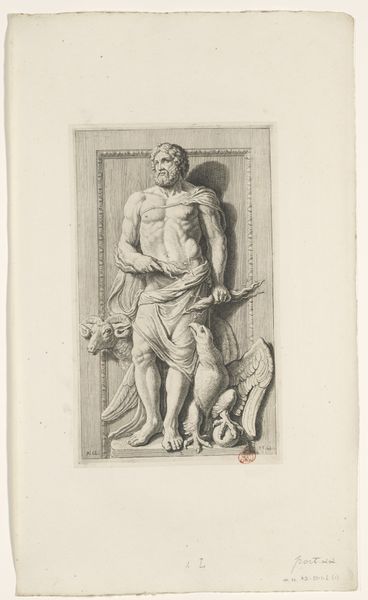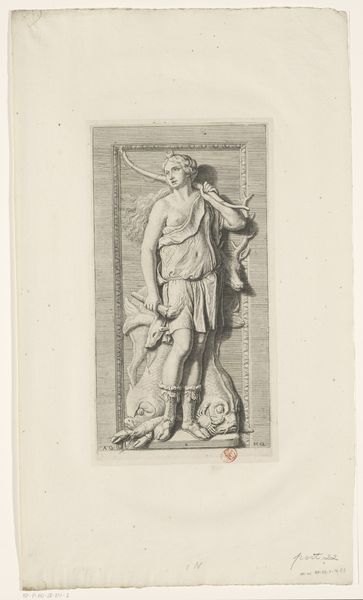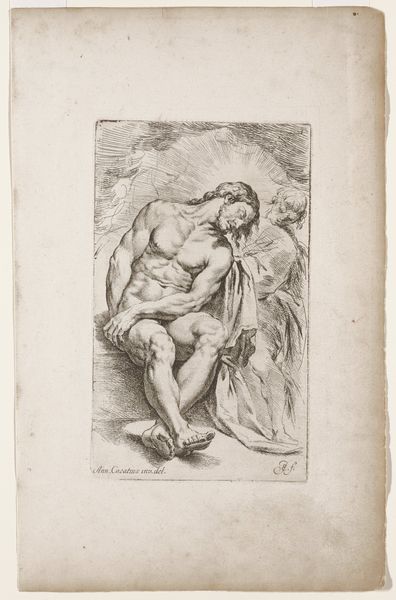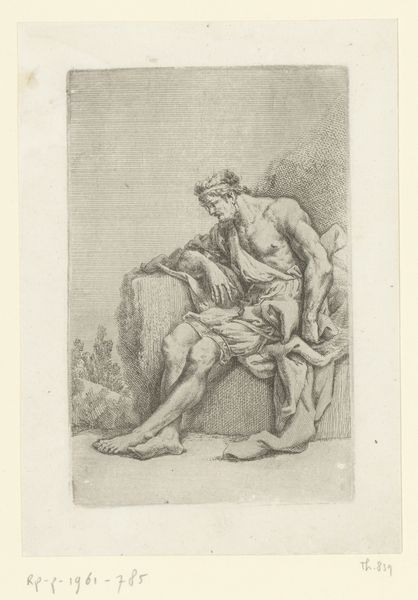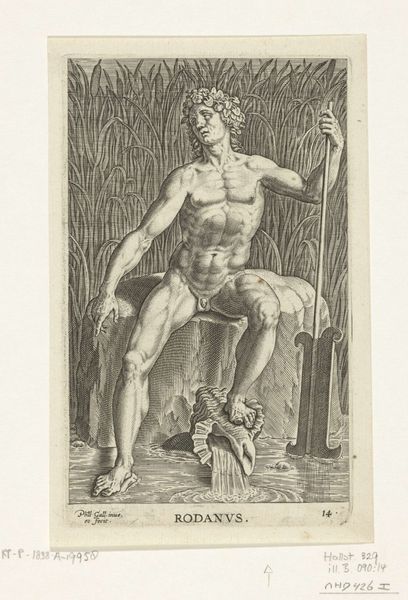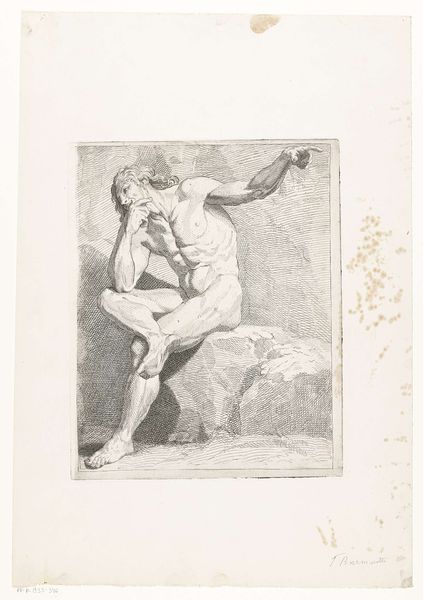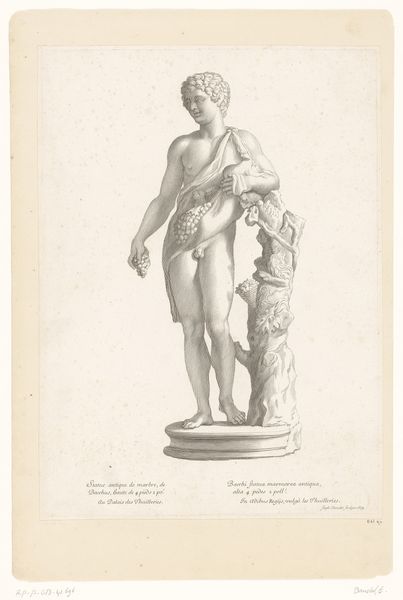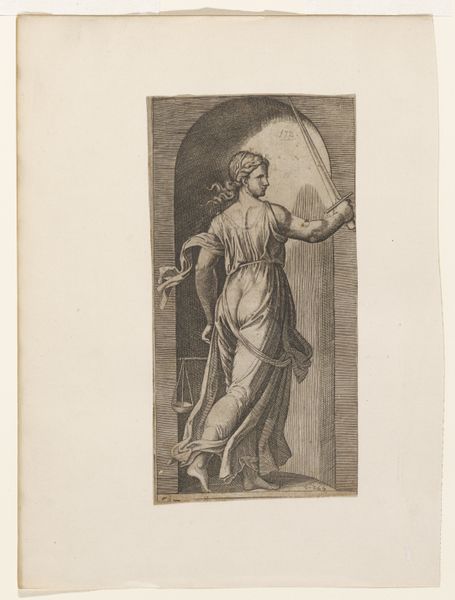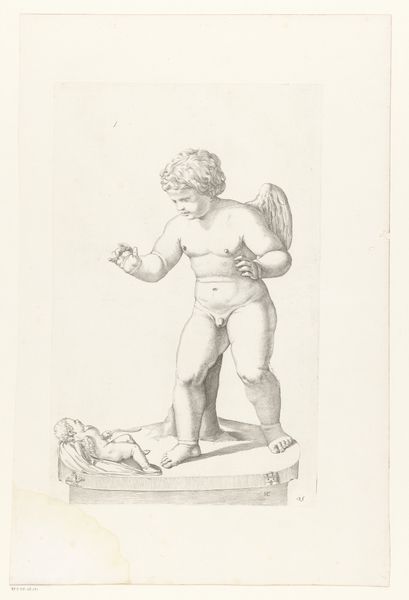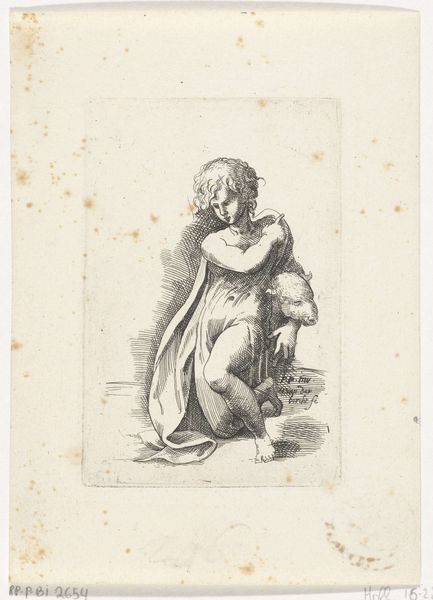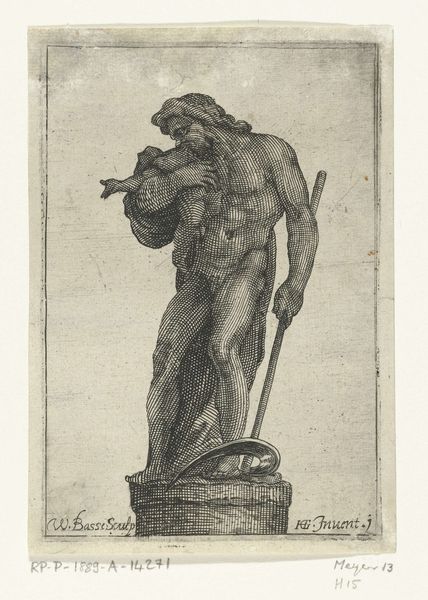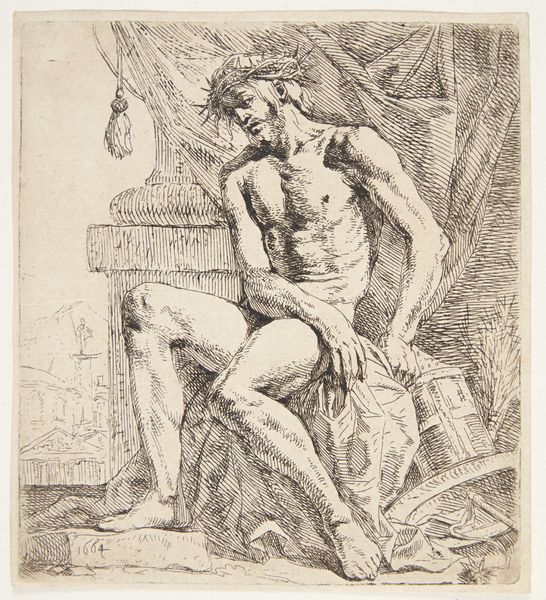
Beeld van Saturnus in de noordelijke galerij van het Stadhuis op de Dam 1655
0:00
0:00
hubertquellinus
Rijksmuseum
print, engraving
#
portrait
#
baroque
# print
#
figuration
#
history-painting
#
engraving
Dimensions: height 328 mm, width 192 mm
Copyright: Rijks Museum: Open Domain
Curator: The somber intensity conveyed within this engraving immediately stands out; the texture work adds a heavy gravitas. Editor: That’s "Beeld van Saturnus in de noordelijke galerij van het Stadhuis op de Dam," a print by Hubert Quellinus dating back to 1655. It resides here at the Rijksmuseum. What elements of its composition give you that heavy feeling? Curator: Certainly, it begins with the imposing figure of Saturn himself—an aged man with a wild gaze eating a helpless infant. Even the details, like the meticulously rendered musculature, contribute to the drama. And what about the other symbols included: the harvesting sickle, lyre and broken sculpture head; a disturbing juxtaposition of mortality with creative pursuits. It evokes themes of decay and the futility of human endeavors. Editor: I can appreciate that. It appears that Quellinus is deploying traditional iconography to capture the themes of Baroque art—mortality and vanity, of course—but let’s think more about what this image signifies in relation to Amsterdam City Hall. As we look closely, we see how this work relies upon visual language. What can it suggest about cultural memory in this context? Curator: Yes, we’re viewing a piece deeply embedded in Dutch history and civic identity. Saturn's presence speaks to a cyclical view of time—of prosperity followed by decline. This serves as a cautionary symbol within the bustling city hall, reminding officials about the ephemeral nature of earthly power and the importance of just governance to preserve the culture of the Dutch Republic. In a culture still traumatized by the beeldenstorm, or iconoclastic fury that swept across the Low Countries a century earlier, such considerations held enormous weight. Editor: Your point about the cyclical is interesting. The stark lines of the print lend an incredible dynamism. Considering its creation and installation within the Stadhuis, how might it communicate ideas about law, history and leadership? Curator: Perhaps in linking political stability to cultural achievement Quellinus highlights the tension between tradition and innovation in early modern Holland. Editor: That strikes me as especially perceptive. A complex emblem indeed. Curator: It makes you reconsider our fleeting time on Earth and the marks we hope to leave.
Comments
No comments
Be the first to comment and join the conversation on the ultimate creative platform.
